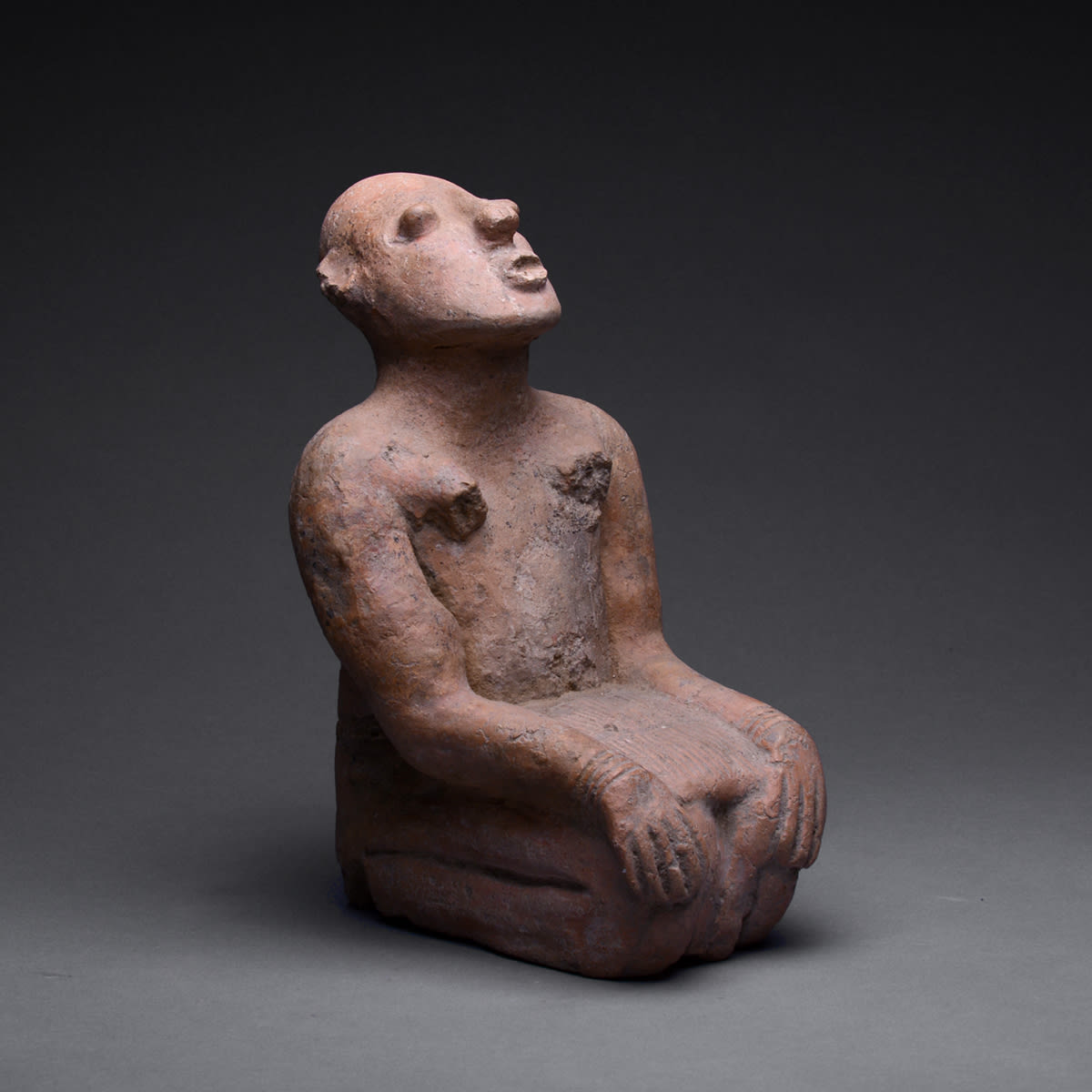Djenne Terracotta Figure of a Kneeling Female, 1200 AD to 1400 AD
height 52.1 cm
height 20 1/2 in
height 20 1/2 in
PF.5489
Further images
Djenné was founded in about 300 BCE by the Bozo people at a site known as Djenné-Jeno, 1.5 km upstream. It moved its site in either 1043 or the 13th...
Djenné was founded in about 300 BCE by the Bozo people at a site known as Djenné-Jeno, 1.5 km upstream. It moved its site in either 1043 or the 13th century, when the city converted to Islam. This increased its importance as a market and a base for trans-Saharan trade, soon rivalling Timbuktu. Djenné, despite its proximity, was never part of the Mali Empire. It existed as an independent city-state protected by walls and the geography of the inland delta. According to legend, the Mali Empire attempted to conquer the city 99 times before giving up. Djenné would not be conquered until 1473 by the Songhai Empire under Sonni Ali. The siege of Djenné is said to have lasted 7 months and 7 days culminating in the death of the city's king and its capitulation. The widow of the city married Sonni Ali, and peace was restored. In 1591, Morocco conquered the city after destroying Songhai's hold in the region. By the 1600s, Djenné had become a thriving centre of trade and learning. Caravans from Djenné frequented southern trading towns like Begho, Bono Manso, and Bonduku. The city continued to change hands several times. Djenné was part of the Segou kingdom from 1670 to 1818, Massina under the Fulani ruler Amadou Lobbo from 1818 to 1861, and the Toucouleur Empire under Umar Tall from 1861 to 1893. The French finally conquered the city that year. During this period, trade declined and the city's importance with it. Djenné (also Dienné or Jenne) is a historically and commercially important small city in the Niger Inland Delta of central Mali. It is just west of the Bani River (the Niger River passes well to the west and north). It has an ethnically diverse population of about 12,000 (in 1987). It is famous for its mud brick (adobe) architecture, most notably the Great Mosque of Djenné, rebuilt in 1907. In the past, Djenné was a centre of trade and learning, and has been conquered a number of times since its founding. Its historic city center was designated a World Heritage Site.





